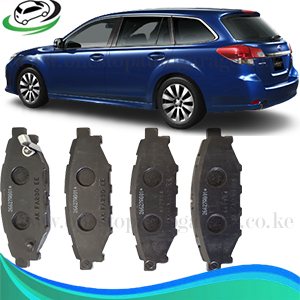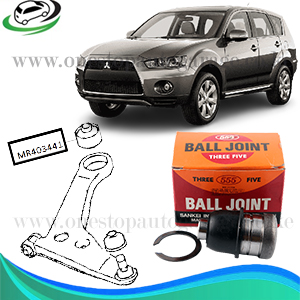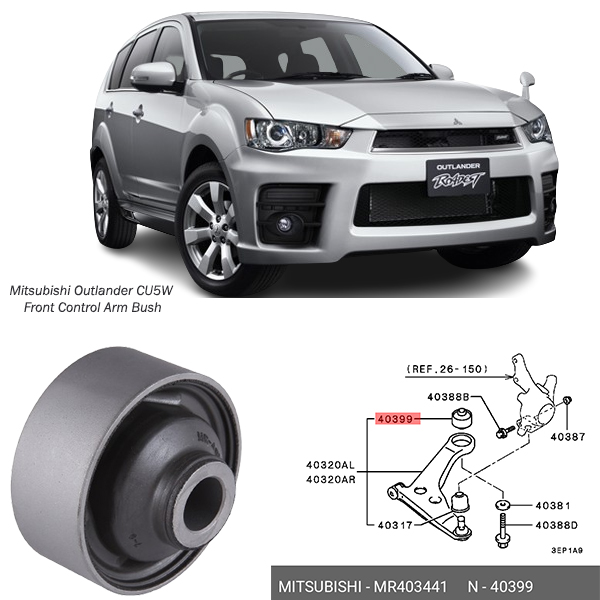-25%
Get Mitsubishi Outlander CU5W Front Lower Big Arm Bush MR403441 in Kenya
The Front Lower Big Arm Bush (also known as a front lower control arm bushing or front lower suspension bushing) is a critical component in a vehicle’s suspension system. It serves as a link between the control arm and the vehicle’s chassis, absorbing shocks, dampening vibrations, and maintaining proper alignment. This bushing plays an essential role in vehicle handling, steering precision, and overall comfort.
In this guide, we’ll explore the structure, function, importance, types, signs of wear, causes of damage, replacement procedures, and maintenance tips for the front lower big arm bush.
1. Structure and Composition of the Front Lower Big Arm Bush
The front lower big arm bush is generally located at the point where the control arm attaches to the chassis, or subframe, of the vehicle. Here’s a breakdown of its typical structure:
- Metal Sleeve: This inner part is often made of steel or aluminum and is where the bolt attaches the bushing to the control arm or chassis.
- Rubber or Polyurethane Core: This is the core of the bushing that provides flexibility, dampens vibrations, and absorbs impacts. Rubber is the most common material due to its balance of flexibility and durability, though polyurethane may be used in high-performance applications.
- Outer Metal Shell: The outer sleeve secures the bushing within the housing in the control arm, ensuring stability and alignment.
This design allows for limited flexibility to accommodate suspension movement while firmly holding the control arm in place, preventing excessive motion.
2. Types of Front Lower Big Arm Bushes
There are several types of control arm bushings, each with specific characteristics suited to various driving conditions and performance needs:
- Rubber Bushings: Standard in most vehicles, rubber bushings provide good dampening properties and a comfortable ride, making them ideal for daily driving. They may wear out faster under high-stress conditions.
- Polyurethane Bushings: Commonly used in performance or off-road vehicles, polyurethane bushings offer increased stiffness and longevity. However, they tend to transmit more noise and vibrations to the cabin compared to rubber.
- Hydraulic Bushings: These bushings contain hydraulic fluid to improve dampening at low speeds. Hydraulic bushings are often found in luxury vehicles, where noise and vibration reduction are prioritized.
3. Function and Importance of the Front Lower Big Arm Bush
The front lower big arm bush serves a few essential functions that contribute to vehicle safety, handling, and comfort:
- Shock Absorption: By absorbing shocks from the road, the bushing helps protect the control arm and other suspension components from damage.
- Vibration Dampening: The bushing isolates the chassis from road vibrations, reducing noise and enhancing cabin comfort.
- Maintaining Alignment: The bushing keeps the control arm aligned with the chassis, contributing to stable steering and handling. Proper alignment ensures that the wheels stay perpendicular to the road, which is vital for safe driving.
- Reducing Wear on Components: The bushing absorbs minor movements and vibrations, preventing premature wear on control arms, ball joints, and other suspension parts.
A well-functioning front lower big arm bush ensures smooth handling, precise steering, and comfort for occupants, especially on rough roads.
4. Signs of a Failing Front Lower Big Arm Bush
Over time, the front lower big arm bush can wear out or become damaged, which leads to various symptoms that affect the driving experience. Here are common signs that indicate a bushing may need replacement:
- Clunking or Knocking Noises: A worn bushing may cause metal-to-metal contact between the control arm and chassis, leading to clunking or knocking sounds, especially over bumps or uneven roads.
- Excessive Vibration: As the bushing wears, it loses its ability to dampen vibrations, leading to a harsher ride and vibrations that can be felt in the steering wheel and cabin.
- Loose or Unstable Steering: If the bushing can no longer hold the control arm securely, you may experience loose or wandering steering, which can compromise handling.
- Uneven Tire Wear: A failing bushing may cause misalignment of the wheels, leading to uneven tire wear, which can affect traction and safety.
- Vehicle Pulling to One Side: Worn bushings can cause uneven alignment or camber issues, making the vehicle drift or pull to one side, especially at higher speeds.
Ignoring these symptoms can lead to further suspension damage, which can be costly to repair and may affect safety.
5. Common Causes of Wear and Damage
Control arm bushings experience substantial wear due to various factors, including:
- Normal Wear and Tear: As the bushing absorbs vibrations and shocks, it gradually deteriorates. Most rubber bushings last between 60,000 to 100,000 miles.
- Road Conditions: Rough roads, potholes, and off-road driving increase stress on bushings, causing premature wear.
- Driving Habits: Aggressive driving, hard braking, and high-speed cornering put extra strain on bushings.
- Exposure to Oil and Chemicals: Oil, road salt, and other chemicals can degrade the rubber or polyurethane in the bushing, leading to faster deterioration.
- High Temperatures: Excessive heat, whether from the environment or the engine, can cause rubber bushings to dry out, crack, or lose elasticity over time.
6. Maintenance Tips for Front Lower Big Arm Bushes
Maintaining control arm bushings can extend their lifespan and improve vehicle handling. Here are some maintenance tips:
- Inspect Regularly: During routine service, have a mechanic check the bushings for signs of wear, cracking, or loosening.
- Avoid Harsh Driving: Reducing aggressive driving can help protect bushings from excessive stress.
- Minimize Chemical Exposure: Check for leaks that could expose bushings to oil, and keep the undercarriage clean.
- Replace as Needed: Bushings are consumable parts and should be replaced as they begin to show signs of significant wear.
Routine inspection and replacement of bushings can help prevent suspension problems and maintain a smooth ride.
7. Replacement Procedure for Front Lower Big Arm Bush
Replacing a front lower big arm bush requires specific tools and skill to ensure proper alignment and torque settings. Here is a general replacement procedure:
- Lift the Vehicle: Using a jack and jack stands, lift the front of the vehicle and ensure it is securely supported.
- Remove the Control Arm: Unbolt the control arm from the chassis and lower it carefully.
- Press Out the Old Bushing: A bushing press or hydraulic press is usually required to remove the worn bushing from the control arm.
- Install the New Bushing: Use the press to insert the new bushing, ensuring it is correctly aligned.
- Reinstall the Control Arm: Reattach the control arm to the chassis and torque the bolts to the manufacturer’s specifications.
- Check Alignment: After replacing the bushing, it’s advisable to perform a wheel alignment check to ensure proper handling.
8. Cost and Benefits of Replacing a Worn Front Lower Big Arm Bush
The cost of replacing a front lower big arm bush depends on the vehicle make and model, labor rates, and the type of bushing chosen. While the initial cost of replacement may seem high, it provides various benefits:
- Enhanced Handling and Stability: New bushings restore control arm alignment, improving vehicle stability and steering precision.
- Increased Comfort: Replacing worn bushings reduces road noise and vibration, making for a quieter, smoother ride.
- Prolonged Tire Life: Proper alignment from functional bushings reduces uneven tire wear, saving money in the long term.
- Reduced Component Wear: Healthy bushings prevent strain on other suspension and steering components, reducing the likelihood of further repairs.
9. Conclusion
The front lower big arm bush may be a small and often overlooked part of a vehicle’s suspension, but its role is crucial in maintaining control, comfort, and safety. By absorbing shocks and vibrations, this bushing enhances ride quality and prolongs the life of other suspension components. Recognizing the signs of a failing bushing and maintaining it properly can ensure your vehicle remains safe, stable, and comfortable for the long run.
For anyone seeking a smooth and reliable driving experience, paying attention to suspension bushings like the front lower big arm bush is vital. Regular inspections, careful driving habits, and timely replacements will maximize performance and comfort, making every drive more enjoyable and secure.
Follow us on Facebook for more parts.



